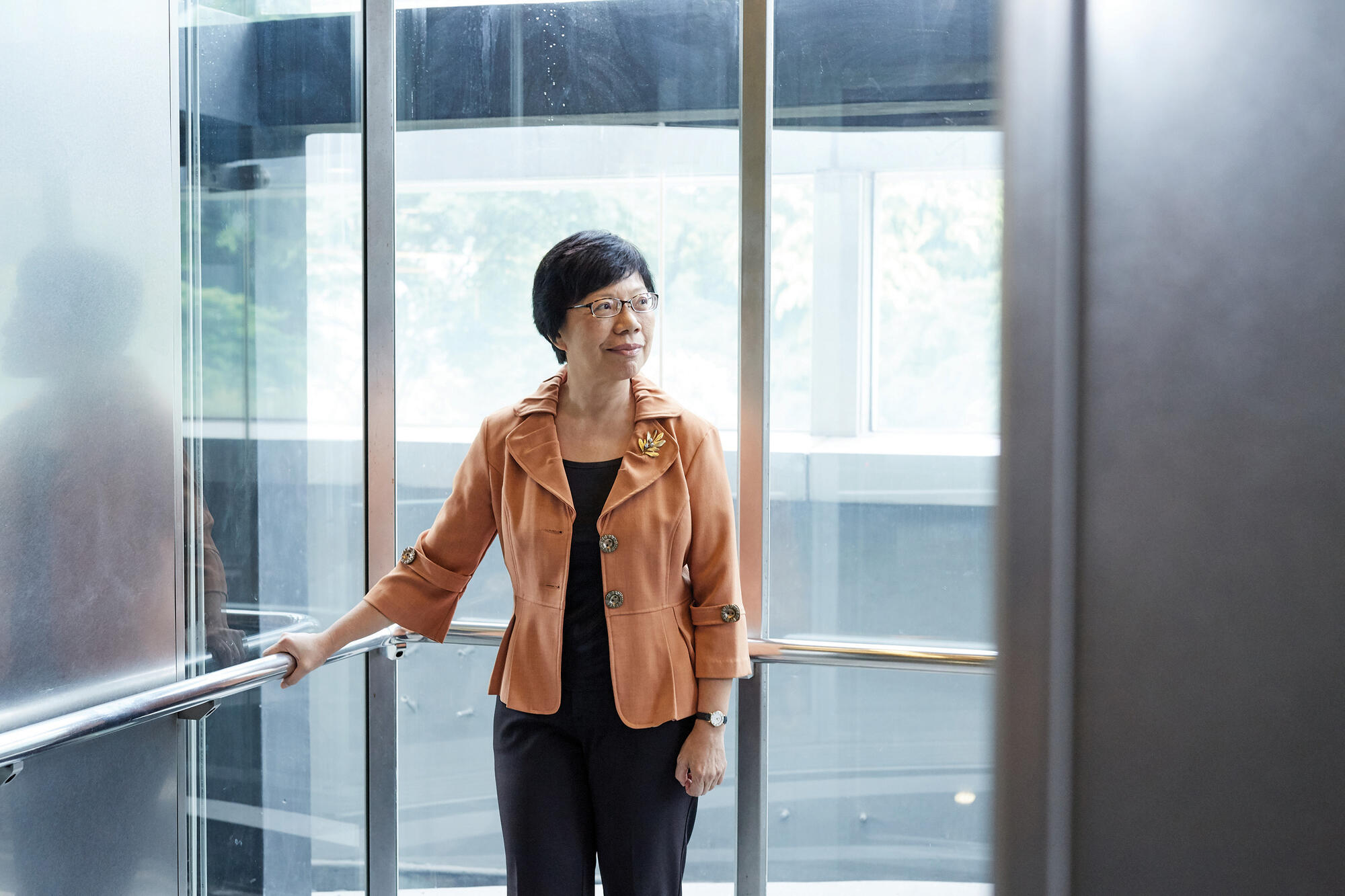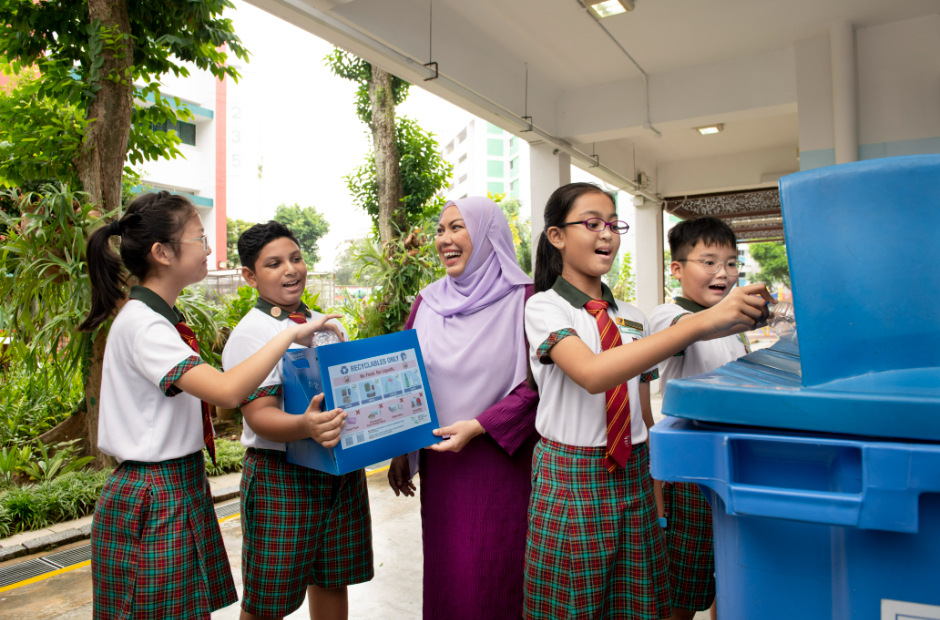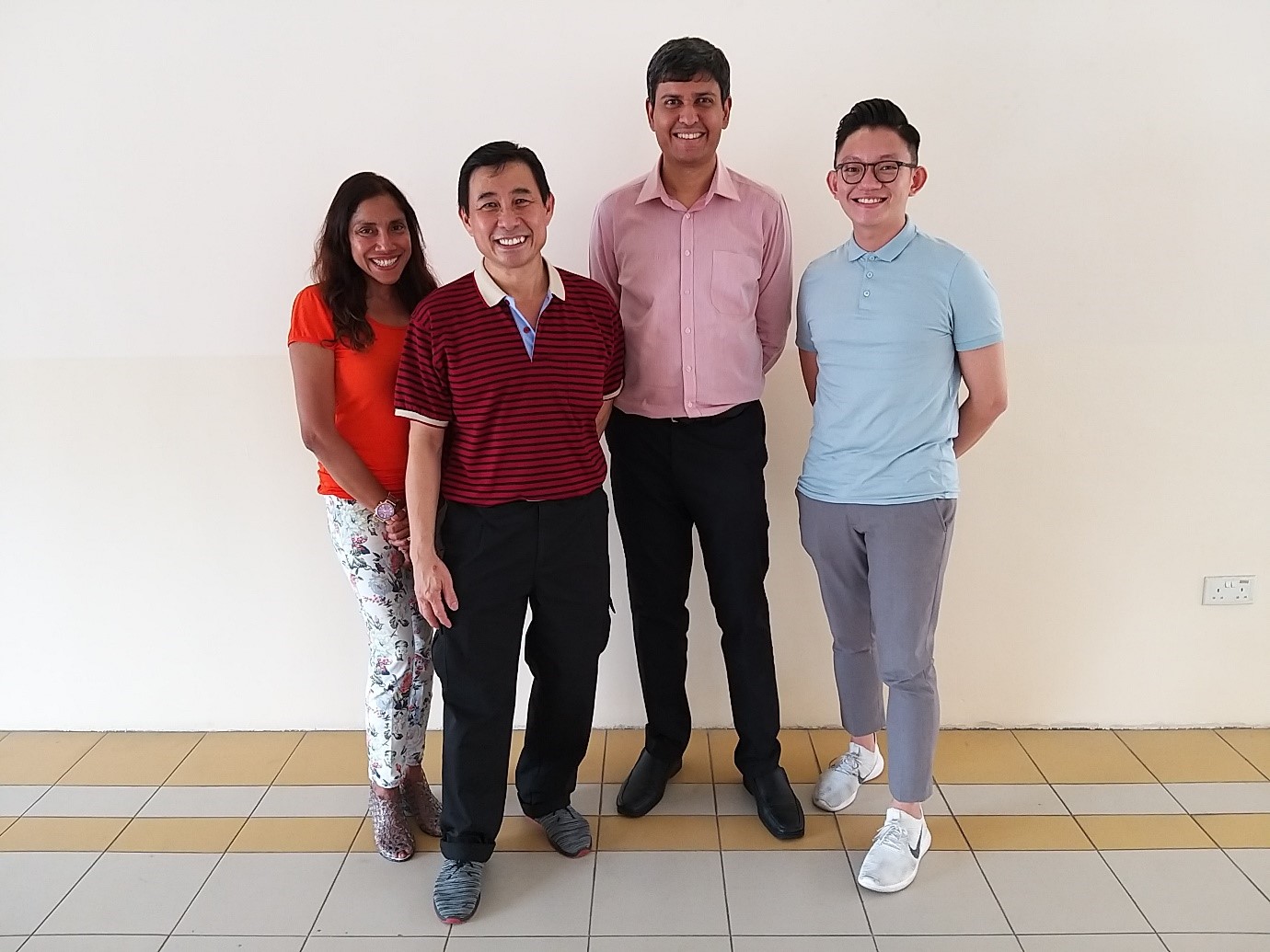What is the standard of a good test? “As a young teacher in the 1980s,” says Ms Tan Lay Choo, “we were taught that a difficult test is a good test. I took pride in setting a test that, somehow, a lot of my students couldn’t do.”
Ms Tan majored in Mathematics, at the then University of Singapore. She graduated and started teaching in 1981. She describes her first batch of students at the Chinese High School as “bright kids”. Allowing herself a wry smile, she continues, “and a good test for bright kids was pretty challenging.”
But only up to a point.
“It was on personal reflection that I realised this is not quite right,” she says. “If I did this as exercises in class, it’s good. It’s formative when I followed up, got feedback, and gave them feedback. But doing it for an exam, and putting that grade in the report book, that’s probably not right. That’s not their standard, or the expectation for that level.”
She subsequently spent a bulk of her career working in MOE’s headquarters – 13 years planning the curriculum and development of the Gifted Education Programme, two years in manpower planning, four years as Principal of Bukit Panjang Government High, a year as a Cluster Superintendent, and four years as Deputy Director of Psychological Assessment and Research, which included two years’ double-hatting as Deputy Director of Psychological Services.
Her last 11 years were at the helm of the Singapore Examinations and Assessment Board (SEAB). Her appointment as Chief Executive in 2008 coincided with the ‘Teach Less, Learn More’ initiatives steadily rolled out by the ministry, amid growing concerns about Singapore’s over-emphasis on academic performance. A national preoccupation that centres around the Primary School Leaving Examination.
Sitting for Ten Years of PSLE Papers
“As a student, I never liked exams,” says Ms Tan. “Even when I was good in math, I got exam anxiety. Being involved in SEAB, the PSLE seemed to be the most painful exam, not just for kids, but parents as well. I heard about kids crying, I heard reports of ‘killer’ questions, and I wondered, do I really know what the kids experience when they take the test?”
So, when it was time for Ms Tan as the new SEAB chief to review the PSLE papers, she started by setting aside time to “do it like a kid”.
“My first look of the paper is very precious,” she explains. “I time myself to see how long I take to do the tests. I try to read slowly and write neatly. That’s when I see the load. I experience what it’s like just responding to the question.”
In her subsequent reviews, she is SEAB – looking after all the technical aspects of the one assessment that sums up a child’s six-year journey through primary school. Is it a good question? Is it aligned to the curriculum? Is it in the syllabus? Are we testing language or testing math?
Eventually, she told the exam-setters, “No paper should make kids cry.”
Ms Tan explains, “If you don’t know that you don’t know how to do a question, you’d give a wrong answer, but you’d still try. But when you’re totally stumped, then you cry.”
She led SEAB to develop PSLE questions that are still challenging, but with invisible scaffolding. “At least, they can get started,” she says. “Kids will feel, ‘I can do part one, just not part two.’ But part one may give them a hint to part two and so on.”
With summative assessments, Ms Tan sees a chance to “make exams a more human experience” instead of treating it as a technical tool, and encourages her staff to see examinations from the students’ perspective.
She says, her role as chief executive of SEAB is not about what she can do for exams, per se. “It’s what I can do for the kids. I never see assessment as an end in itself. It’s a means to communicate to students what they’ve learnt. A human being is involved. We always have to be mindful of this interaction between a person and the exam or test.”
“At the end of the day, I remind the setters, there’s a kid who is answering your question. This is more than just setting good exams to give a mark or grade to decide on the fate of the kid.”
At age 61, Ms Tan is officially retiring after 37 years in the education service. If the start of her teaching career was marked by the introduction of streaming. Her retirement in 2019 takes the journey one full circle, with the phasing out of streaming.
“My Teacher Did Subject-Based Banding!”
On the concept of subject-based banding, she has a personal account to illustrate its benefits – from the 1960s.
“Actually, my teacher did subject-based banding,” Ms Tan says, recalling her primary school days, “or something almost like it.”
It was her mathematics teacher, in particular, who had to manage a class of students with varied motivations, capabilities and family backgrounds.
Her teacher would bring three boxes of cards, with math questions pitched at different levels – each box was a different colour. She would teach a concept, and then task the class to take a card from one of the boxes to work on. After solving the math problem (rightly or wrongly), students brought their work to the teacher for marking, and then they would be asked to take another card to work on.
“It turns out that she was differentiating her lessons,” says Ms Tan. “At that time, very few primary school children had gone to kindergarten; some were totally averse to school and tried to run away. That was a skilful way in trying to deal with a wide range of students, systematically. We didn’t feel like the teacher was teaching anyone differently, but she was.”
Ms Tan had been taking cards from the red box.
“One day, my teacher told me, ‘Go to the red box and take another card.’ I went to the red box, but there were no more cards. I’d finished all the cards there.” What her teacher did next was most illuminating.
“She said, ‘Okay, I’ll give you something else to do. I’ll give you a blank card, and you try to come up with a set of math questions that look like the cards from the red box, but change all the numbers. The condition is you must be able to solve them.’”
For Ms Tan, this was a shining example of challenging all the students – and not just some – to be as good as they can be. “I was quite happy making cards for her. I didn’t know I was already setting questions when I was in Primary 4,” she says. “For many years, it didn’t occur to me how significant this was,” she says. “In the sense of how much you can learn from the teacher depended on you, even beyond what she brought to class.”
Like subject-based banding, it is about giving students the opportunity to demonstrate their best effort.
The Next Frontier for Assessment
Singapore’s education system has evolved, so too must assessments. “It is a natural cycle of events,” says Ms Tan. “We’ve developed our curriculum, we’ve grown pedagogy, now there’s a lot of potential to grow our assessment skills.”
The next frontier, she says, will be centred around 21st Century Competencies (21CC).
Before the internet, exam-setters were focused on testing for facts and procedures. Examinations, in turn, were the standard for good assessment. “As students, we relied on the ten-year series as a reference point, and some of us kind of became the teachers that did as well,” jokes Ms Tan.
“It’s only in the last decade or so that we talked a lot more about the importance of assessment for learning,” she says, “about using assessment to facilitate learning, and how to differentiate between standardised summative exams versus school-based exams.”
This is more crucial today than before. Not all learning outcomes for the 21st century competencies can be assessed using written examinations only. Competencies such as collaboration and creativity can only be assessed by teachers in the classroom.
Today, these are infused into Singapore’s mainstream curriculum under the 21CC framework. What’s interesting, however, is that many of these ideas started in the Gifted Education Programme.
The GEP began in 1984, the year Ms Tan got posted to work on it. “We started things like project work, collaboration, research skills,” says Ms Tan, “and it pushed us to think about how to assess thinking skills. We talked about skills like 21CC, but didn’t call them that.”
Over the years, many of these initiatives were cascaded into mainstream schools.
“Today, project work is in every school,” Ms Tan says. “When it was first introduced in junior colleges, teachers had to grapple with assessing skills that don’t have right or wrong answers. They had to grapple with assessment of work done in groups, looking at student behaviours and oral presentations. It took about a decade for teachers to get used to these things.”
In the middle of her posting, she pursued a Master’s degree in education evaluation and research at the University of California, Los Angeles. She returned to the Gifted programme, to evaluate and develop it further.
The juice was worth the squeeze. By the early 2000s, Singapore was ahead of the curve. “I remember Hong Kong came to learn from us,” says Ms Tan, “and then they introduced independent research as one of the qualifications for a new diploma.
“Subsequently, I hosted the South Australian Certificate of Education, and they introduced a form of project work in their examinations. More recently, Finland’s head of the exam board and their equivalent of director-general visited us, too. They were all searching for ways to assess 21CC.”
Now that Ms Tan has more time on the personal front, what is on her mind? She is searching for a deeper understanding of one competency that has intrigued her for decades.
“Creativity is still an elusive concept,” she says, referring to her interest in Chinese ink painting (a hobby she has maintained for over three decades).
“The process is not very visible even to the artists themselves. If they become too procedural, they won’t be happy with their work. They’d say, ‘I can produce this one hundred times with the same level of consistency, but I’m not happy with it.’ I’m always fascinated by the concept, and the best way to understand it is to be involved in the creative field. I’m still in that pursuit. It’s about personal creativity and the concept of creativity as a teacher. That’s my next personal goal.”
A version of this article was originally published in Issue 34 of “Contact: The Teachers’ Digest” with the headline “Exams Shouldn’t Make Children Cry”.






